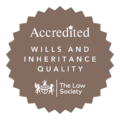It is estimated that 4.98 million of us live in leasehold dwellings in England; one of very few countries in the world to retain the leasehold tenure. While it has become more common for tenants to collectively own the buildings within which their flats are situated, the majority of tenants still have a landlord who owns their building. Landlords are also known as freeholders, and tenants are often referred to as leaseholders. The relationship between landlords and tenants imposes various obligations on both parties, but if you’re a tenant, do you know who your landlord is? If you don’t know the answer to that question, this can cause problems during the ownership of the flat and when you’re attempting to sell.
What classifies as an Absent Landlord?
An absent landlord is a landlord or freeholder who does not fulfil their obligations regarding their property. This could include failing to repair and maintain the shared areas in apartment blocks, not insuring the structure and common areas of the building and not collecting ground rent.
In addition to the above, absent landlords can cause less obvious issues for leaseholders where they are unwilling or unable to carry out their obligations under the lease, such as resolving disputes between leaseholders, granting lease extensions, providing information when tenants wish to sell or mortgage their property, or entering into deeds of variation to vary the terms of a lease. This can leave leaseholders in a difficult situation and can potentially affect the value or marketability of their flat.
Communal Areas
If shared areas are not maintained, repaired and generally kept up to a satisfactory standard, this may cause structural defects to the flats and building and there could also potentially be safety issues.
Landlord’s Insuring Obligations
Landlords are commonly responsible for insuring buildings against fire and other usual risks. Tenants can in theory insure the extent of their flat, but they cannot rely on other tenants to insure the adjoining flats, so they need the landlord to insure the whole building. The landlord’s insurance will cover the main structure and any common parts. In the event of damage or destruction by an insured risk, the landlord is usually obliged to reinstate or rebuild the building using the insurance money or, where reinstatement / rebuilding is not possible, to pay out the insurance monies to the tenants. With an absent landlord, tenants are at risk of there being inadequate buildings insurance in place and therefore cannot rely on protection from them.
Disputes with other Leaseholders
Landlords are usually obliged to act as an intermediary when disputes between leaseholders arise. This is vital part to maintaining a healthy, cooperative relationship with fellow leaseholders. If there is not a freeholder to oversee these disputes, leaseholders may have to seek an alternative means of resolution, which can typically be more expensive, time consuming and frustrating. On a similar theme, landlords would usually, at the request of one or more tenants, enforce the tenant covenants contained in the lease against a non-performing tenant. There is no direct contractual relationship between tenants in a building, so they have no direct means of enforcing their obligations against one another.
Lease Extensions
For many leases, there will come a time when the leaseholder needs to extend the term of their lease. This is a costly process for the leaseholder as they must enter into negotiations with the landlord to agree the cost of the extension and the length of the term. If the landlord is absent, this can make negotiations impossible and result in further costs and delays for the leaseholder.
In the worst-case scenario, though thankfully rare, if the lease term was allowed to expire, ownership of the flat would then revert to the freeholder. A lease is a diminishing asset, and it is crucial that tenants can extend the term of their lease when required, and therefore retain the value in their leasehold interest. Leasehold reform is currently on the government’s agenda and there are ongoing proposals to simplify the process and to improve leaseholders’ rights, but until these proposals are enshrined in law, an absent landlord can present a significant risk to a tenant with a diminishing lease term.
Payment of Rent
While a landlord’s failure to collect rent from tenants might not seem like a bad thing, most leases include a right for the landlord to re-enter the property and to bring the lease to an end if rent is unpaid for more than 21 days. Rent is typically due from the tenants even if not demanded, so an absent landlord could in theory seek to forfeit a lease for non-payment of rent even when they have not been demanding it. This right of forfeiture is subject to statutory controls in favour of tenants to stop landlords abusing the right, and the non-payment can easily be remedied as soon as the landlord issues a demand, so this issue is perhaps more a theoretical one than a practical one but is another example of unexpected problems tenants can face with an absent landlord.
Selling and Remortgaging
Selling and remortgaging a flat requires a level of communication and assistance from a landlord. In addition, the tenant is usually required under their lease to notify the landlord of the sale/remortgage. This is because the new buyer will have to notify the landlord that they are the new occupant on completion. If the landlord is absent, there is little to no communication meaning that a sale can prolonged. This may in turn make the new buyer hesitant to buy the property if they know they will have an absent landlord. This can frustrate chains and potentially jeopardise a flat owner’s onward purchase.
Deed of Variations
Old leases often require changes to reflect new legislation, to correct errors in the original or for various other reasons. A tenant cannot unilaterally vary their lease, even if there is an obvious error in the original or if new legislation renders the lease defective. With an absent landlord, varying the lease becomes problematic. This can impact on a lender’s willingness to lend on flats, meaning that an owner can potentially only sell to a cash buyer. Even then, the value or marketability of a flat can be adversely affected if necessary changes cannot be made.
Insurance
Landlords are commonly responsible for insuring buildings against fire and other usual risks. Tenants can in theory insure the extent of their flat, but they cannot rely on other tenants to insure the adjoining flats, so they need the landlord to insure the whole building. The landlord’s insurance will cover the main structure and any common parts. In the event of damage or destruction by an insured risk, the landlord is usually obliged to reinstate or rebuild the building using the insurance money or, where reinstatement/rebuilding is not possible, to pay out the insurance monies to the tenants. With an absent landlord, tenants are at risk of there being inadequate buildings insurance in place and therefore cannot rely on protection from them. This means that the security, which is meant to be offered by the landlord, can possibly impact the tenant’s possession, something which wouldn’t be an issue on a freehold property.
To Conclude, an absent landlord can pose a range of problems for the tenant/ leaseholder. There is currently little provision in the law to assist tenants when there is an absent landlord. It is likely, with the current leasehold system, these issues are unlikely to be fixed any time soon. Commonhold is different tenure where each leaseholder owns part of the freehold. This avoids many of the issues discussed as the tenants effectively police themselves and has been talked about in the House of Commons. However, an absent landlord can still cause a lengthy, costly ordeal for a leaseholder.
B P Collins’ property team has extensive expertise in advising parties involved with leasehold properties. If you have any questions or queries, please contact 01753 889995 or email enquiries@bpcollins.co.uk

















